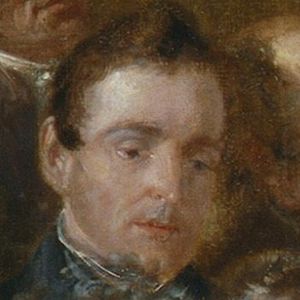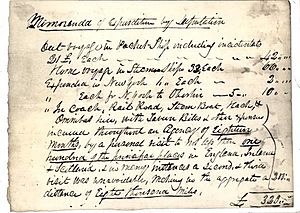William Dawes (abolitionist) facts for kids
William Dawes was an important person in the 1800s. He was an abolitionist, which means he worked to end slavery. Dawes was also connected to Oberlin College in Ohio, a special school for its time.
Contents
Who Was William Dawes?
William Dawes was a dedicated abolitionist. He believed that all people should be free. He worked hard to support causes that helped end slavery in the United States. His efforts were part of a larger movement that changed history.
What Was Oberlin College?
Oberlin College was unique in the 1800s. It was one of the first colleges in America to welcome students of all races. It also allowed both men and women to study together. This was very unusual for colleges at that time. Oberlin College was a place where new ideas about equality were encouraged.
How Did Dawes Help Oberlin College?
William Dawes played a key role in helping Oberlin College. He traveled to England with another important person, John Keep. Their mission was to raise money for the college. Many people in England who also opposed slavery were happy to help.
Why Was Fundraising Important?
Raising money was very important for Oberlin College. It helped the college continue its work of educating students. Because Oberlin was open to everyone, it needed support to keep its doors open. The money Dawes and Keep collected helped the college grow and succeed.
Dawes and the Anti-Slavery Movement
In 1840, William Dawes and John Keep went to a big meeting in London. This meeting was called the World Anti-Slavery Convention. It brought together people from all over the world who wanted to end slavery. This shows how important Dawes was in the global fight against slavery.
What Was the World Anti-Slavery Convention?
The World Anti-Slavery Convention was a major event. It was a chance for abolitionists to share ideas and plan how to end slavery. Attending this convention meant Dawes was part of a worldwide effort for freedom and justice.
Dawes's Legacy at Oberlin
William Dawes and John Keep are also remembered for starting something special at Oberlin College. They helped begin a collection of materials about African American history and culture. This collection later inspired many writers and thinkers.
What is African Americana?
African Americana refers to books, documents, and other items related to African American history. Starting this collection was important. It helped preserve the stories and experiences of African Americans. This was a big step in recognizing their contributions to society.
William Dawes and the Underground Railroad
There was a house in Hudson, Ohio in the 1830s that was used to help people escape slavery. This house was occupied by someone named William Dawes. It is believed that this house was part of the Underground Railroad. The Underground Railroad was a secret network of safe houses and routes. It helped enslaved people travel to freedom in the North.
What Was the Underground Railroad?
The Underground Railroad was not a real railroad. It was a secret system of routes and safe places. Brave people, called "conductors," helped enslaved people escape to free states or Canada. These safe places were often called "stations." The Underground Railroad was a symbol of hope and resistance.



